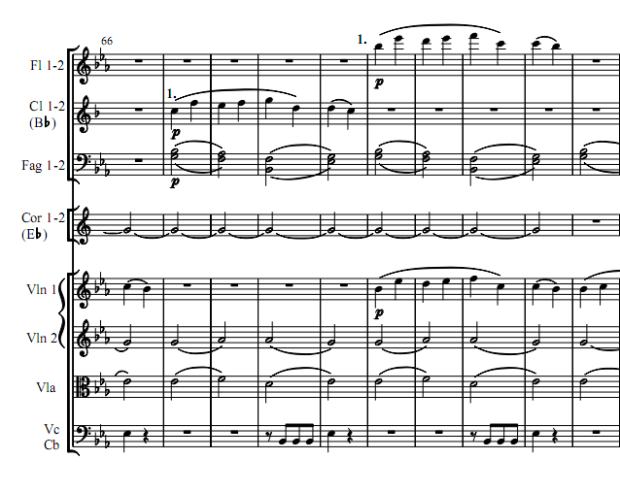Ludwig van Beethoven
Symphony No. 5 in C Minor, Op. 67
I. Allegro con brio
http://manchesterlib.naxosmusiclibrary.com/streamw.asp?ver=2.0&s=101977%2Fmancheslibnml11%2F2447008
I. Allegro con brio
http://manchesterlib.naxosmusiclibrary.com/stream.asp?s=101977%2Fmancheslibnml11%2Fq79908%5F105
(Accessed 02/01/2018)
I listened to Sir Simon Rattle’s version of this symphony conducting the Wiener Philharmoniker orchestra. The opening of this symphony surely contains the 4 most difficult notes to conduct of any symphony. It is so well known and has been done at different tempos and phrasings that everyone has their own interpretation of how ‘it’s supposed to sound’. Case in point…I thought Rattle’s version was slightly too fast!!! If I listened to this on a different day it’s quite likely I’d change my mind 🙂
On listening to the full orchestral version of this piece it is difficult not to be struck by the power of the orchestra (even though it is relatively small compared to the orchestras of the later Romantics), the wide dynamic range, the contrast between the full orchestra and the occasional solo lyrical section such as the solo oboe in bar 268 (marked Adagio). Then of course you have the different timbre of the instruments that Beethoven has blended, and when playing the repeated 4 note motif each section adds it’s own flavour to the sound.
Allegro con brio
http://manchesterlib.naxosmusiclibrary.com/stream.asp?s=101977%2Fmancheslibnml11%2Fq79908%5F105
On listening to the piano version there are several things that strike me. First off I’m impressed at how good it sounds! In the hands of a good pianist the different flavour of the parts comes through with different piano touches. It’s also easier to hear the overall harmony and in some ways it sounds even more beautiful than the symphonic version. The repeated motif is easier to pick out in the bass part when the upper parts are playing a different melody in bb 63-91 for example. But what you gain in clarity, you lose in texture, where the melody is bounced around the flutes and clarinets for example.

Score extract courtesy of http://www.musedata.org/beethoven/sym-5/
There are other parts that are lost when the piece is transcribed for the piano, most notably in the winds and horns that can have a completely different attack to the sound of the piano, and can grow louder as the players blow harder, whereas the piano has a fixed attack and decay. In modern synth parlance the Attack, Decay, Sustain and Release of the piano is narrowly fixed when compared to the other instruments of the orchestra that can all grow louder as the players bow or blow harder and also vary their tone with different bowing and other techniques.
I prefer the symphonic version for the power and texture as described above, however I was surprised at how good the piece sounds on the piano and I suspect I will listen to this again many times. I might even have a go at playing it. It might start to sound passable in a decade or so….